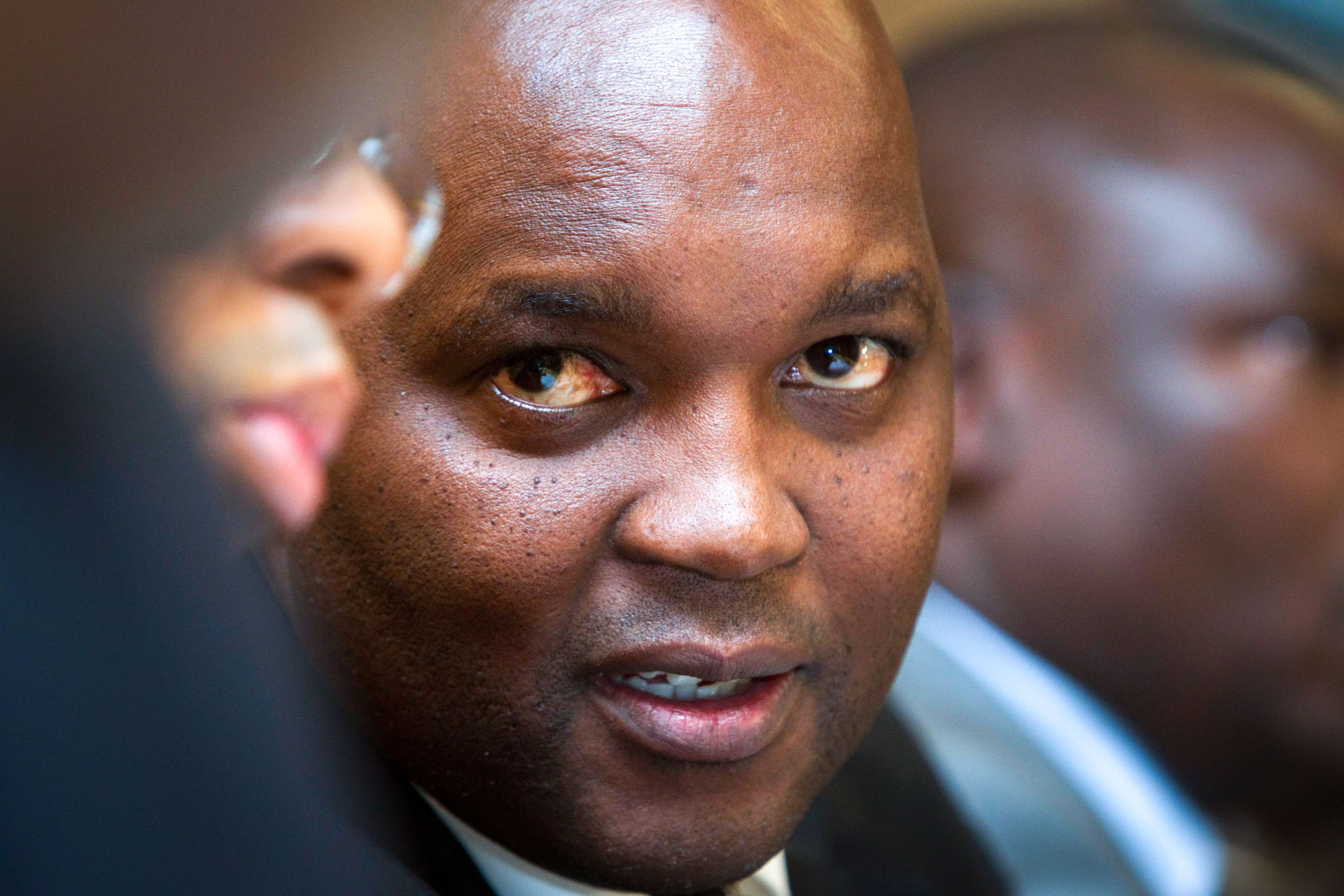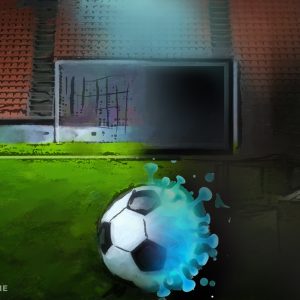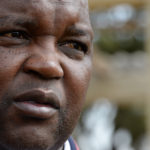Pitso Mosimane on SA’s bittersweet World Cup legacy
The former Bafana assistant coach got the top job after the 2010 Fifa World Cup, left in embarrassing fashion and then bounced back to conquer Africa. But SA football hasn’t had such a remarkable t…
Author:
10 June 2020

Bafana Bafana assistant coach Pitso Mosimane was nervous waking up at the Southern Sun Grayston Hotel in Sandton on 11 June 2010, the day of the opening match of the 2010 Fifa World Cup in South Africa. But who wasn’t feeling nervous that morning? And euphoric? And expectant?
The message a few days earlier had been to take to the streets on 9 June for Bafana Bafana’s parade through Sandton. The energy was already palpable in the form of flags attached to almost every car as support for Bafana – as was the case when South Africa won the 1996 Africa Cup of Nations – straddled race. What a time it was to be alive, and South African.
Ten years later, the Covid-19 pandemic is keeping a country seemingly more fractured than pre-2010 – after a decade of Zupta years that hollowed out the economy and took a psychological toll on its people – confined at home. The coronavirus and government lockdown regulations have derailed any attempt at a 10-year anniversary celebration, although the South African Football Association (Safa) inexcusably appears not to have lined up a big commemoration match anyway, much like it has mostly failed to deliver a legacy for 2010.
Related article:
“It would be an emotional game, and a legacy. We’d invite maybe Spain, who won the World Cup,” laments Mosimane, now the trophy-endowed coach of Mamelodi Sundowns. “I wasn’t really thinking about the 10 years, to be honest. But you do think back, you look at the pictures. My son had a picture of the Bafana team passing by our house. It’s like it was yesterday. You get emotional with it.”
Mosimane no doubt had the spring in his step of every South African on 11 June, as he negotiated the phalanxes of Mexican fans staying in the same hotel as the Bafana team in the lifts and lobby. But his stomach cramped with nerves on the bus as Bafana cruised to Soccer City in their dedicated lane, enjoying a level of organisation by Fifa and South Africa for which the coach now yearns.
Mosimane, one of the two assistant coaches along with coach Carlos Alberto Parreira’s Brazilian compatriot Jairo Leal, had been tasked with keeping tabs on Mexico. After the disappointment of Bafana’s early exit from the tournament, Parreira would be a scapegoat for many. But Mosimane does not feel Bafana could have done a lot better.
Group stage exit
South Africa led Mexico after Siphiwe Tshabalala’s gem of a goal, but conceded in the 79th minute. Katlego Mphela hit the post in the 92nd, which would ultimately have seen the national team through to the next round. But Bafana naively capitulated to Diego Forlán’s mastery and Luis Suárez’s cheating, losing 3-0 against Uruguay at Loftus. They then beat a shambolic, although still world-class on paper, France 2-1 in Bloemfontein, but it wasn’t enough for them to advance to the knockout stage.
“I think Parreira was the right man because he had the right pedigree to lead us. Calm guy, cool. Very educated in football, had won a World Cup and the Confederations Cup. When Pele was still playing, he was one of the physical trainers,” says Mosimane.
“We were glad to have a figure like that leading us, because we had never been to a World Cup. I believe we could have made a lot of mistakes if he was not there, because he planned everything.
Related article:
“Parreira trusted me that we should play ‘Shabba’ [Tshabalala], ‘Yeye’ [Reneilwe Letsholonyane], ‘KG’ [Kagisho Dikgacoi], Teko [Modise], Mphela, [Itumeleng] Khune. He gave me very big responsibilities. He’d say, ‘If you see something urgent, stand up and coach. You can’t wait for me.’ And I used to coach. I wasn’t picking up balls behind the goalposts.
“That’s what I was nervous about on the day against Mexico, which team they would put out. Because I was assigned to follow them for their last six games. And it’s unbelievable, I don’t think they respected us, because in those six games they played about 35 players, and you would not know the 23 who would pitch for the tournament.
“When we came out for the warm-up, some people were emotional. I remember MacBeth Sibaya crying, because you have never seen so many people, and so many Bafana jerseys, in the stands,” Mosimane recalls.
“We didn’t start well for the first 15 minutes. We were so nervous. We couldn’t even control the ball. Mexico were all over us. We asked ourselves, ‘What’s going to happen when 15 minutes goes like this?’ It’s like, ‘Welcome to the World Cup.’
“That’s what the thing with Shabba’s goal was. We exchanged two, three passes, KG put a beautiful pass and the stadium was up, and we went mad on the bench. You could see Mexico never gave us respect. They were up at the halfway line, so we got behind them. And then we got the confidence and we put the ball together.
“But we left with mixed emotions from that match. We did not win and we were 12 minutes from a win. But we had another feeling, that we were leading and we could have won. And it gave us a feeling that, let’s go for the second one. And also that we did not embarrass the country.”

Mosimane 10 years on
Against Uruguay, Player of the Tournament Forlan was intense and immense. Even then Bafana held the eventual semifinalists to 1-0 until the 76th minute, when Suarez skipped over a Khune challenge but dragged his foot to get the keeper sent off and earn the penalty for Forlan’s second. Álvaro Pereira’s goal to make it three came deep in injury time.
“Our best game was against France. You could say, what a way to end it. But you could also say you wished you could go more, because it’s like you’re gaining momentum,” Mosimane recalls. “Mphela hit the post twice. We were all over them. We gained respect from our people, even if we didn’t continue.”
Mosimane has been part of the legacy created by the World Cup. Trained and groomed by Safa to be the Bafana coach, he replaced Parreira but things didn’t work out. At Sundowns, he has won the 2016 CAF Champions League and consistently reached the knockout stage of the continent’s premier club competition. Having put together the best club team in South Africa since the 1990s, Mosimane is often acknowledged as among the top six coaches in Africa at present.
Related article:
He recognises that the infrastructure has transformed the Premier Soccer League (PSL) into perhaps Africa’s most-watched league. But Mosimane just wishes the finer details had been maintained.
“You ask yourself sometimes why a lot of stadium management is not great. We used to have the TV feed in the dressing room, and could see what was happening on the pitch before the match. Those things are still there. Some people took the feed off the TVs. Somebody feels they are not important, or too expensive.
“The pitches collapsed. The stadiums in KwaZulu-Natal were built as training facilities. But when we played Golden Arrows, it was a water polo game because it rained. But positives, you have people like [CAF deputy secretary general] Anthony Baffoe, who was groomed at the World Cup. Look at [former acting chief executive of Safa] Russell Paul, who is now with the World Cup in Qatar.”
The legacy on the field is far more debatable.
“When the USA hosted the 1994 World Cup, they put a fund to find and develop Under-12s or 13s in the whole country. The biggest thing for them was to make sure USA qualified for the World Cup every year. And they achieved that until the last World Cup, which they were not part of.
“For us, there were some good things. I was part of the guys who benefitted educationally. We have developed coaches, Steve Komphela, Manqoba Mngqithi, Neil Tovey, Shakes Mashaba. Did we fully benefit from the legacy of the World Cup? Yes and no. We still have challenges.”
PSL vs Safa
A fourth-tier SAB League club owner revealed in a recent New Frame report that club running costs can be more than R50 000 annually, which have to be raised from thousands of middle to lower-income South Africans. The government has made noises about reviving organised school football, which has unfathomably fallen into sharp decline since democracy.
Safa president Danny Jordaan’s feud with PSL chairperson Irvin Khoza flares up periodically, and the PSL and Safa largely behave as if they are opposing political parties, making it impossible to rectify certain incapacitating structural deficiencies. For example, if rich professional football could fund lower-league clubs and bankroll a revival of school football, that could change the top-heavy landscape of wealthy league and poor amateur football. It could revive the talent pipeline and would ultimately benefit both Safa and the PSL.
“Ja, but you can’t have those things when we don’t talk the same language from the football side, from the federation side and the PSL,” Mosimane points out.

That’s why the next step for the Sundowns coach, who is known for dipping into his own pockets to fund development initiatives, is to get involved in school football projects.
“I graduated straight from school to professional football [at Jomo Cosmos in the 1980s]. That’s how it used to be,” Mosimane says. “You can say the club academies have replaced schools football. But keep the academies and bring back schools football, too.”
The 10 years since the 2010 World Cup have left the nation with as many questions as answers about a legacy. But that month – from 11 June to the final in which Spain beat Netherlands 1-0 at Soccer City on 11 July, when the world’s greatest footballers landed on South African football fields in the midst of a freezing cold winter – was the best of the times, and it was the best of times (with apologies to Charles Dickens).



